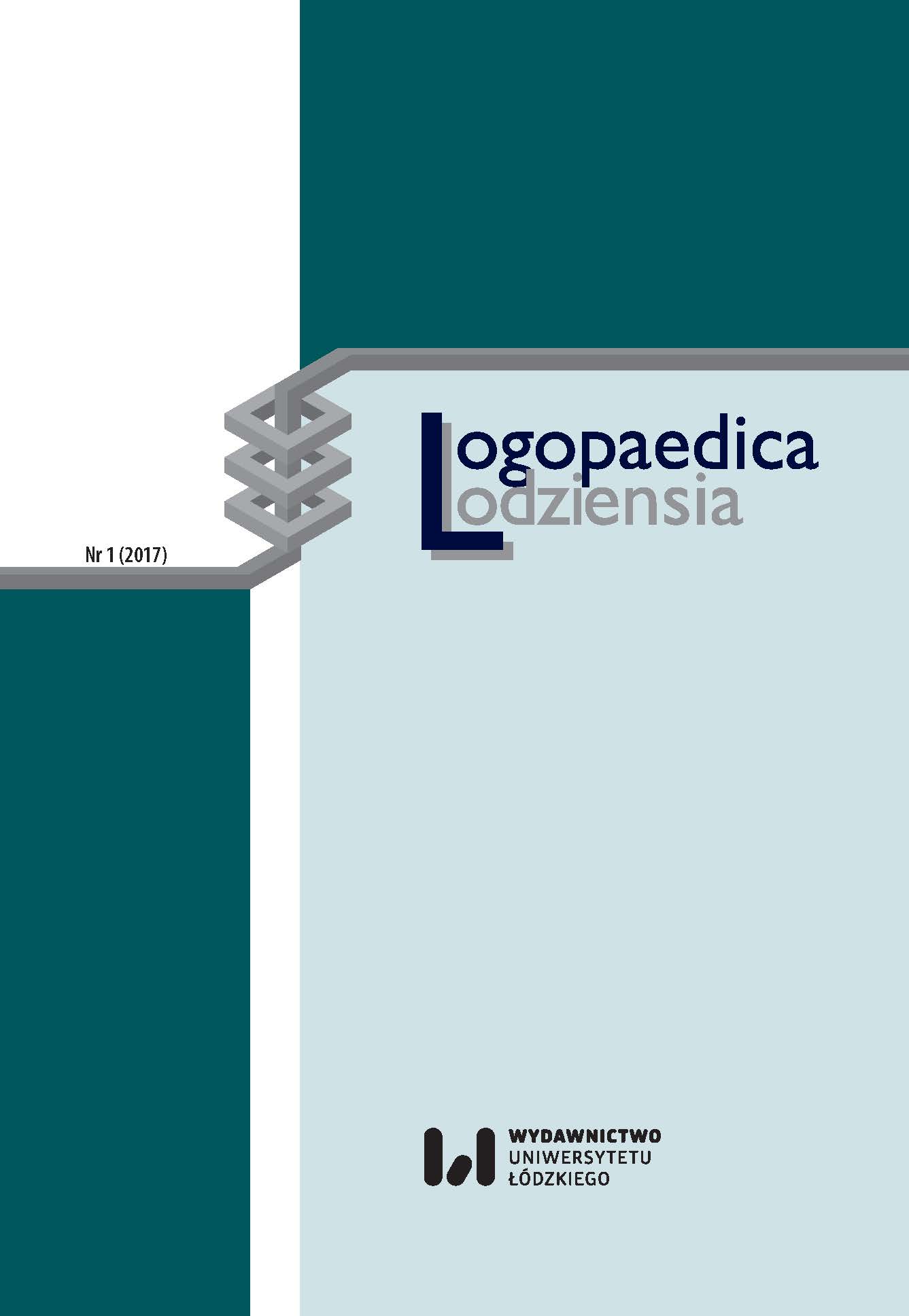Nowe metody diagnostyczne oceny czynności głosu dla potrzeb foniatry i logopedy
New diagnostic methods of evaluation of voice activity for phoniatrists’ and speech therapists’ needs
Author(s): Jurek Olszewski, Joanna Nowosielska‑GrygielSubject(s): Language and Literature Studies, Library and Information Science, Education and training
Published by: Wydawnictwo Uniwersytetu Łódzkiego
Keywords: diagnostic methods; evaluation of voice activity; phoniatrists’ and speech therapists’ needs; metody diagnostyczne; ocena czynności głosu; potrzeby foniatryczne i logopedyczne
Summary/Abstract: The aim of the study was to present new diagnostic methods of evaluation of voice activity for phoniatrists’ and speech therapists’ needs. The voice formation depends not only on the correct contraction and vibration of the vocal cords, which reinforce the acoustic Energy of the fundamental tone, but also on the function of the resonant cavities and articulatory organs, affecting the timbre and the production of sound elements of speech, that is sounds. The European Society of Laryngology has proposed a diagnostic protocol since 2001. It recommends: videolaryngostroboscopy (VLS), acoustic examination and voice self‑assessment, except for interview and physical examination. Examination of acoustic parameters allows for objective analysis of the larynx tone. This is an important and only advantage of this method. Comprehensive voice analysis includes subjective and objective examinations, evaluating, based on GRBAS scale, the voice character and different modifications of voice malfunction, that specify functional, emotional and physical condition of examined person, may determine how the extent of the voice disorder may affect quality of life. They allow to determine proper etiology, make a diagnosis, plan the treatment schedule and follow up voice disorder effects of treatment.Celem pracy było przedstawienie nowych metod diagnostycznych oceny czynności głosu dla potrzeb foniatry i logopedy. Czynność tworzenia głosu zależy nie tylko od prawidłowego zwarcia i drgań fałdów głosowych wzmacniających energię akustyczną tonu podstawowego, ale również od funkcji jam rezonacyjnych oraz narządów artykulacyjnych wpływających na barwę głosu i wytwarzanie dźwiękowych elementów mowy, czyli głosek. Europejskie Towarzystwo Laryngologiczne z 2001 roku zaproponowało protokół diagnostyczny, który zaleca, poza wywiadem i badaniem przedmiotowym, przeprowadzenie oceny odsłuchowej głosu, badania wideolaryngostroboskopowego (VLS), badań akustycznych oraz samooceny jakości głosu. Badanie parametrów akustycznych głosu pozwala na obiektywną analizę tonu krtaniowego. Jest to ważna zaleta tej metody. Kompleksowa analiza głosu, obejmująca zarówno badania obiektywne, jak i subiektywne dotyczące oceny charakteru tworzonego głosu za pomocą skali GRBAS, oraz różne modyfikacje testów niesprawności głosowej określające stan funkcjonalny, emocjonalny i fizyczny badanej osoby, pozwalają na stwierdzenie, w jakim stopniu zaburzenie głosu może wpływać na jakość życia. W codziennej praktyce foniatry i logopedy umożliwiają rzetelne określenie etiologii, postawienie rozpoznania, zaplanowanie leczenia oraz monitorowanie efektów leczenia zaburzeń głosu.
Journal: Logopaedica Lodziensia
- Issue Year: 2017
- Issue No: 1
- Page Range: 91-99
- Page Count: 9
- Language: Polish

